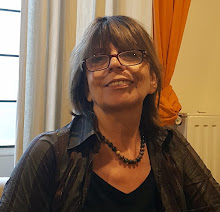''we each develop a "guiding fiction" or "myth" of ourselves by as early as two-years of age, one which we carry with us into adulthood and unconsciously influences our decisions, sense of self, and behavior. This myth of who we are determines how we perceive ourselves, the world, and our relationship to that world.''
''Jung, already innately introverted, was forced farther inward to seek and create his own personality. Or, as Jung himself puts it, his two personalities. The first personality was the ordinary, mundane, dependent, as yet undeveloped and immature boy, with his banal, bourgeois, conventional, rational outer reality and intense inferiority feelings. But the second personality was precisely the polar opposite: mature, powerful, wise, superior, autonomous, instinctual,spiritual, mystical, and deeply rooted and embedded in nature and the irrational. In hindsight, the grown Jung seems to have recognized that the second personality was clearly compensatory to the first, what we today refer to as a "grandiose self" designed to offset painful feelings of inferiority, anxiety and insecurity. Jung, however, felt strongly that this phenomenon is not intrinsically pathological, but rather, archetypal, indeed something "played out in every individual."
The first personality was the ordinary, mundane, dependent, as yet
undeveloped and immature boy, with his banal, bourgeois, conventional,
rational outer reality and intense inferiority feelings.
This description has an Intriguing resemblance with Self 1, in Inner Game theory, by Timothy Gallwey and the other - with Self 2: the second personality was precisely the polar opposite: mature, powerful, wise, superior, autonomous, instinctual,spiritual, mystical, and deeply rooted and embedded in nature and the irrational.
Interesting to emphasize that Jung himself didn't despised neither of the two selves, and his ''characterization of this splitting or, better, polarization of selves, as fundamentally archetypal or existential. An essentially normal if extraordinary example of a tension of opposites--albeit one which certainly can turn pathological when no conscious integration occurs.''
"I have had much trouble getting along with my ideas. There was a daimon in me, and in the end its presence proved decisive. It overpowered me, and if I was at times ruthless it was because I was in the grip of the daimon.. . . A creative person has little power over his own life. He is not free. He is captive and driven by his daimon." (pp. 356-357)
From this article:
Who are we really?
skip to main |
skip to sidebar

Through 'Nestworking' you build an energetic gradient for the change you want to achieve - "Growing is an act of freedom"
Postare recomandata
Coaching, then and now
''Cel mai tare m-a impresionat felul cum dispari ca viata personala in fata celui caruia ii oferi coaching.'' Magda Bunea,...
Despre mine

- coach Magda Bunea
- pot să abstrag de la tors - vorba lu eminescu - si sa vad fuiorul ---------------"when me they fly i am the wings" - ralph waldo emerson
Etichete
- 1 personal coach (20)
- 1 prix blogal (1)
- about me (46)
- about me; me about coaching/english (5)
- argument (3)
- as a professional coach (18)
- as professional trainer (2)
- atelier de coaching comunicare: NESTworking (1)
- atelier de comunicare: NESTworking (142)
- autori de incredere (1)
- ce spun oameni frumosi despre mine (13)
- ce spun teste credibile despre mine (5)
- coaching avant la lettre (51)
- coaching inquiry* (3)
- COACHs CORNER/colţul antrenorului (28)
- comunicare si (direct) marketing (62)
- efemeriNde (copyright Ion Frunzetti) (60)
- feeding awareness (1)
- inner game/ timothy gallwey (26)
- interviuri cu oameni mari (12)
- lateral living (127)
- mine (se citeste main) (6)
- PARLEAZ - de aici poți sa incepi să schimbi ceva (46)
- people on the shelf/oameni de care ma mir (91)
- Quotable Magda Bunea © (75)
- revista COACHING NETWORK (15)
- Revista de Povestiri and Imagination Coaching (36)
- România - mon pe ”i” (după E.M. Cioran ”Mon pays”) (87)
- Sharing knowledge (3)
- welcoming transformation (1)
- writtings in english (67)
- writtings on coaching/good for no matter what (140)
- writtings on no matter what/good for coaching (128)
Arhivă blog
-
►
2009
(29)
- ► septembrie (1)
-
►
2010
(114)
- ► septembrie (18)
-
►
2011
(76)
- ► septembrie (16)
-
►
2012
(65)
- ► septembrie (2)
-
►
2013
(224)
- ► septembrie (18)
-
►
2014
(111)
- ► septembrie (9)
-
▼
2015
(126)
-
▼
iunie
(9)
- Copil!
- Dacă ceva poate fi măsurat, acel ceva este (sic!) ...
- inner representative of a "higher self" (''A creat...
- meaning, challenge, work, purpose
- ''Şi dumneavoastră ce vreţi să fiţi?''
- ''Ce este un coach'' este cine este el. (sic!)
- Q: Cum ne ajuta coaching-ul?
- new media, new proverbs
- Listening - a poem by Tom Peters
- ► septembrie (10)
-
▼
iunie
(9)
-
►
2016
(60)
- ► septembrie (2)
-
►
2017
(36)
- ► septembrie (4)



